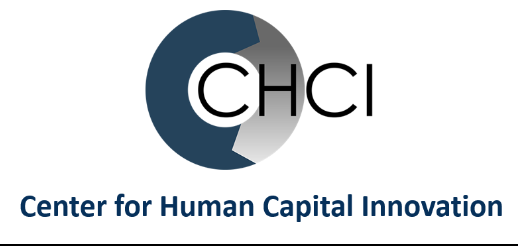
How Limiting Remote Time for New Hires Raise Job Satisfaction and Performance
Most leaders agree the “where” of work should follow the “why,” meaning the best workplace strategies don’t start with location—they start with purpose. Yet there’s a persistent myth that any limit on remote work will tank morale, particularly among Gen Z employees (those born between 1996 and 2012). The data tells a more nuanced story. Across age groups, hybrid work arrangements (not fully remote and not fully on-site) correlates with higher job satisfaction. And for the youngest employees, more in-office time early on appears to make the biggest difference.
The Data on Younger Workers On-Site
A recent study from Business Horizons shows that Gen Z workers report a consistent preference for hybrid work rather than being predominantly or fully remote. According to the article, a hybrid work environment combines the employee benefits of office amenities, social interaction, and visibility with the scheduling flexibility and work-life balance common in remote work. The implication is straightforward: hybrid beats fully remote and fully on-site, and hybrid with a little extra on-site often works best for early-career employees, as we will discuss.
To realize the benefits of partial in-office mandates for new and younger workers, other employees must spend some time in the office as well in a way that is not seen as punitive. A randomized controlled trial published in Nature last year found that a two-days-from-home hybrid schedule maintained performance while increasing job satisfaction and cutting attrition by roughly a third. Managers that voluntarily participated in these trials initially feared a productivity and engagement dip. However, they subsequently agreed that a well-designed hybrid schedule is a win for both the organization and all of its workers.
Most employees benefit from co-location because it facilitates mentoring, networking, social learning, relationship-building, and, of course, collaboration. Younger and new employees benefit from these things more and, accordingly, see additional benefits from spending more time in the office.
The Argument for Limiting Remote Work for New Hires
Blanket return-to-office mandates are increasing. Too often, these mandates are blunt instruments, often unnecessary and frequently harmful to productivity and retention. A time-bound, role-appropriate limit on remote work for new employees, on the other hand, advances organizational goals: faster ramp-up, stronger networks, and clearer performance norms. A recent Harvard Business Review (HBR) article on hybrid onboarding highlights that even limited, structured in-person time improves manager involvement, accelerates access to meaningful work, and clarifies expectations. These benefits are uniquely valuable for new employees in their first months on the job.
In-person “moments that matter,” such as onboarding, project kickoffs, or feedback activities, are where proximity pays off most. An MIT Sloan article explains that leaders should engineer these occasions deliberately instead of relying on blanket attendance rules. For new hires, concentrating their in-office time during their early weeks or months reduces ambiguity and builds social capital they can leverage later.
Balancing Proximity and Expanded Flexibility
What does an effective hybrid schedule actually look like during onboarding? Below, we provide a suggested template of how to incorporate a hybrid model while ensuring that the new hire and the organization both benefit.
- Define an on-ramp of 60–90 days (role-adjusted).
New hires are on-site three or four days per week, with synchronized anchor days so they regularly interact with managers, peers, and key partners. Design these days around apprenticeships, shadowing, and live feedback rather than simply prioritizing “butts in seats.”
- Formalize mentorship.
Pair each hire with a manager‑mentor duo. Expect daily touchpoints in weeks 1–2, tapering down to twice weekly by week 6. Record how many times they are observed doing key tasks, and use that information to clearly demonstrate their learning and progress.
- Use a simple skills checklist.
As competencies are demonstrated, which is faster to verify in person, allow more remote autonomy. This reduces the perception of an arbitrary rule and ties flexibility to performance rather than tenure.
- Taper to steady-state hybrid.
After the on-ramp, default to two or three team-aligned anchor days. This mirrors the pattern in the Nature study and preserves the benefits of both focus time at home and collaboration in the office.
- Measure outcomes, not attendance.
Track time-to-productivity (a recruitment metric that measures skill development), such as first-year retention, internal mobility, and self-reported satisfaction. Compare it against the research data to see if the program is working or if adjustments need to be made.
Case in point: Microsoft’s rationale for tightening in-office expectations
In September 2025, Microsoft announced that most employees will be required to work on-site at least three days per week, with a phased rollout beginning in early 2026. The company framed the shift as a return to intentional collaboration rather than a rollback of flexibility.
Why? In an internal town hall, CEO Satya Nadella and Chief People Officer Amy Coleman cited internal data showing employees who spend at least three days in the office are more likely to be “thriving” (defined as energized, empowered, and purposeful). Nadella argued that remote work can weaken the social ties needed for innovation and makes it harder to form new connections, especially for new hires who lack cultural grounding and established networks. Coleman added that effects vary by team, and higher-demand groups (e.g., Microsoft AI) may need stricter norms. The policy still leaves room for team-specific flexibility while explicitly linking presence to collaboration quality and innovation speed.
Addressing Common Objections with Evidence
Don’t be surprised if employees raise objections, especially for workplaces that are currently fully or mostly remote. They might accuse the organization of inserting a “stealth return-to-work (RTO).” And that perception may stick without an explanation of how presence improves learning and outcomes. When in-person moments are designed thoughtfully and deliberately, employees will more likely perceive the tradeoff as developmental, not punitive.
Remember, hybrid works when it’s reasonable and attractive. Offer transit stipends, flexible start/stop windows, social reasons to incentivize coming to the office, and accommodations at an individual level rather than a one-size-fits-all approach. Anchor days should be team-coordinated to maximize in-person meeting needs, not building occupancy. A common complaint of forced RTO is that employees end up on the same series of Zoom calls as they did when they worked remotely, so they don’t see the purpose of working in the office. Be transparent with the reasons for the change and share the metrics used to track it. When operating from a place of consistency and intentionality, teams will quickly see the difference between performative and purposeful presence.
Hybrid is the Destination and Proximity is the On-Ramp
Choosing between autonomy and supervision isn’t necessary—these two options are entirely compatible. Hybrid is here to stay, and, when done well, it raises satisfaction and lowers attrition while helping performance. For early-career employees, the best path to long-term flexibility is short-term structure. This means more time with managers, mentors, and peers until norms are internalized and skills are solid. Remember, new hires tend to love their jobs sooner, perform faster, and stick around longer when proximity is a feature of the first 60–90 days, followed by expanded flexibility.
What is your biggest tip for successfully implementing a hybrid workplace? Which do you prefer: working from home, working in the office, or both? Leave a comment below, send us an email, or follow us on LinkedIn.


Leave A Comment